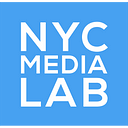Pro-tips from advertising, marketing and media execs working with VR/AR
How media professionals are translating the new medium of virtual and augmented reality to clients and consumers
At NYC Media Lab’s second annual Exploring Future Reality conference, dozens of media professionals experimenting with VR/AR prototyping, storytelling and business operations gathered to discuss the medium’s current state.
Listed below are several industry tips and tricks from executives who have been leading the first big wave of production and distribution — each pointing to projects and experiences underway at companies such as Time Inc., Viacom, NBCUniversal, The New York Times, Verizon and more…
Cultivate tastemakers.
Framestore’s Resh Sidhu believes that the quality of VR/AR content will determine whether the medium lives or dies. To encourage “good content” she advises brands to consider when it’s appropriate to harness immersive media.
For global, multi-brand companies like Time Inc., this means devising content strategies that can speak to nearly every type of consumer while still honoring a quality-over-quantity ethos. 220 million people utilize a Time Inc. brand every month, which, according to Chris Hercik of The Foundry, is 2/3 of all Americans. Hercik’s team is dedicated to “advancing the medium forward” by leveraging storytelling and editorial expertise with Time. Inc’s massive distribution potential.
Skimping on quality may prevent new users from truly understanding VR/AR’s potential.
Forget everything you know about filmmaking.
“Where is the close up?” is a common question asked of Jessica Lauretti, who leads RYOT at The Huffington Post. Our brains are trained to think in 2D, particularly when it comes to media. Lauretti argued that VR/AR producers need to abandon traditional staging and learn to think about storytelling more in terms of theater.
It seems fitting that one of America’s largest media corporations is raising the bar for theatrical VR. Sowmya Gottipati of NBCUniversal presented on recent experiments at NBC-owned theme parks, referencing Universal Studio’s Halloween-inspired mixed reality haunted house.
On the production end, more theatrics means more moving around, which can lead to “VR sickness.” For Helen Situ of NextVR, the key to designing long-form VR experiences is being conservative with traditional practices like rapid camera cuts and action shots. When bringing a live VR basketball game to a fan, NextVR will use 8–10 cameras and capture at high 6k resolution — strategies that are less likely to trigger nausea.
Hire production teams with diverse professional backgrounds.
“We’re about collaboration. We want to work with more people beyond the film and game pillars of VR.” — David Lui
If an ad is no longer just a photo or video, than art direction teams can no longer solely consist of photographers and videographers. Architects, designers, writers, data scientists, strategists, and web developers all need to collaborate together to solve the challenges of thinking in 360 degrees.
David Lui of Viacom NEXT is currently collaborating with professionals from all walks of the creative sector. His goal is to bring to light society’s biggest issues, spanning from climate change to women’s rights and voting inequality. The Viacom NEXT team actively seeks out producers who have never worked in VR, hoping to encourage artists to push their thinking in by experimenting in the medium.
Consider the ways VR/AR can improve business operations.
While marketers may eventually be concerned with quantifying the financial returns of projects, there is a already an opportunity to use the medium for business growth and development. Physical presence is often difficult — R/GA’s Marc Maleh stressed that VR/AR can be the most realistic way to internally communicate products, services, ideas and workflows.
AR + computer vision will shape a new generation of consumers.
There’s been a lot of experimentation with 360 videos, as both production and output is cost effective. For this same reason — and considering that mostly everyone already owns a smartphone — Brett Leary of Digitas noted that mobile AR applications should not be overlooked.
Leary believes that data-driven AR mixed with computer vision has the potential to re-shape commerce. The ability to hold a phone up to a product and immediately sense its details could help consumers better imagine how the product will fit into their lifestyle.
Verizon Lab’s evnrmnt is one of the platforms bringing VR and AR technology to the forefront. Verizon’s Christian Egeler presented on a recent prototype that brings magazines to life — scanning a cover can now loop interactive video content of a featured celebrity.
Have brave creative leadership…but manage expectations.
“It took over a hundred years of storytelling to get to where we are today, and you guys want us to solve VR in a year… it’s not going to happen.” — Resh Sidhu, Framestore
The New York Times is releasing a new 360 video on a contemporary issue each day. Last fall, Kelly Alfieri’s team at NYT VR sent over a million cardboard headsets to print subscribers. Many experienced the medium for the first time with these do-it-yourself headsets.
A willingness to take clients and consumers into uncharted territory is crucial. But those interested in immersive storytelling need to manage expectations and realize that the medium is still in an exploratory stage. VR/AR will eventually reach wide adoption —but in the mean time it will require a series of risks for executives in media companies.
The full panel discussion on advertising and marketing can be watched on YouTube, as well as the flash presentations from media company representatives.
For questions regarding upcoming events, contact Alexis Avedisian, NYC Media Lab Communications Manager (alexis@nycmedialab.org)
